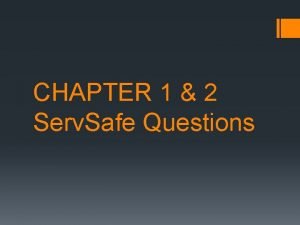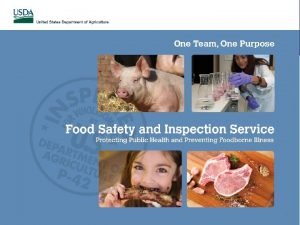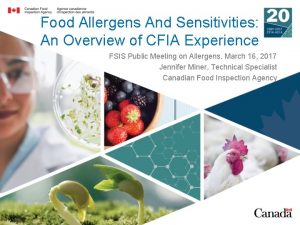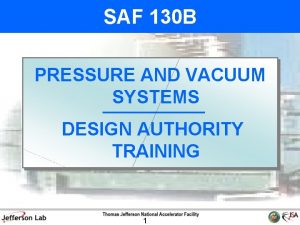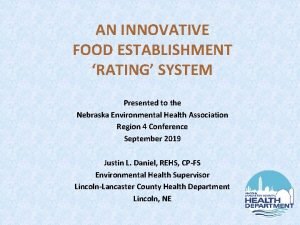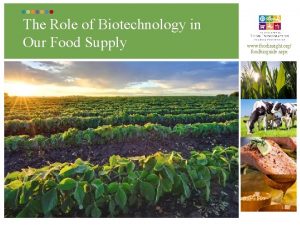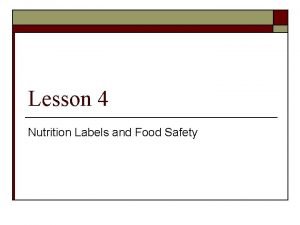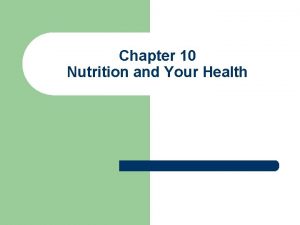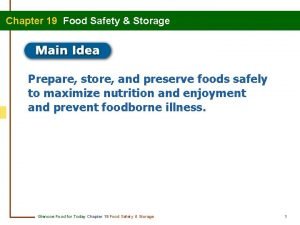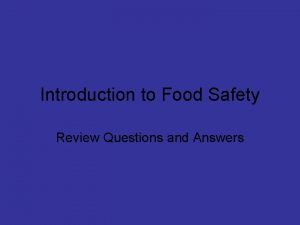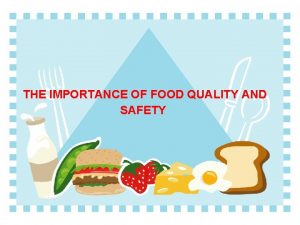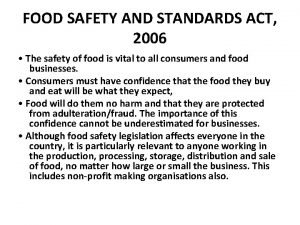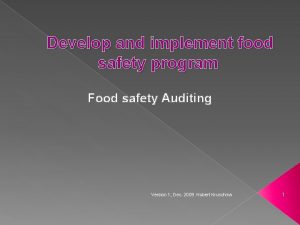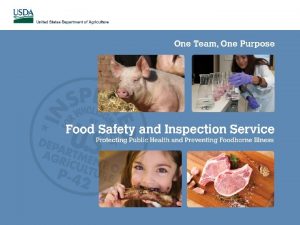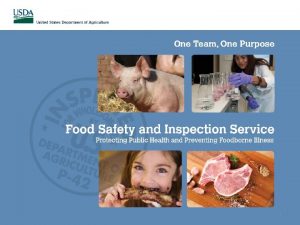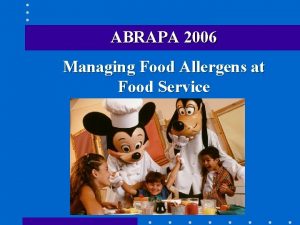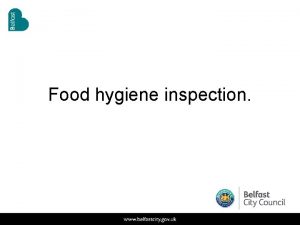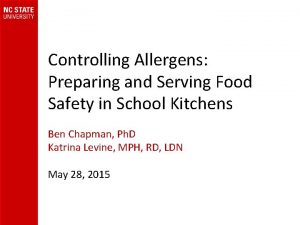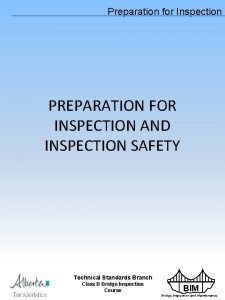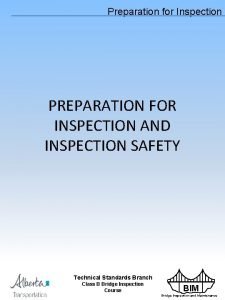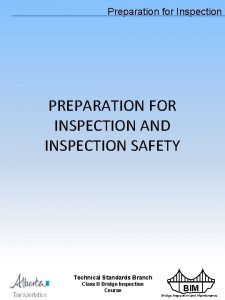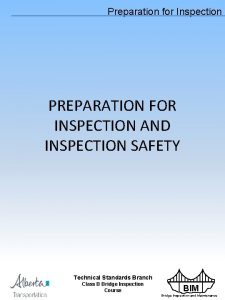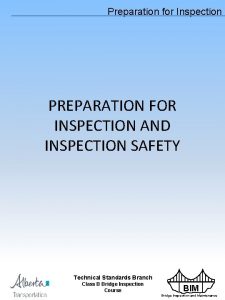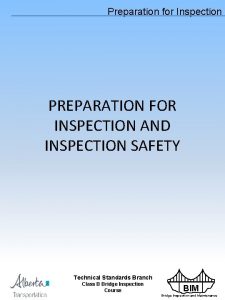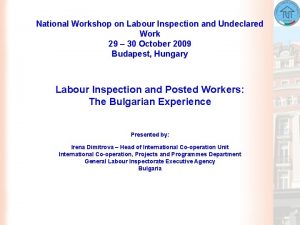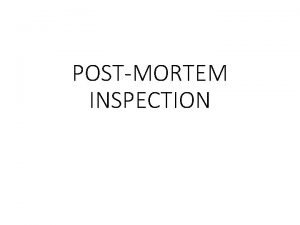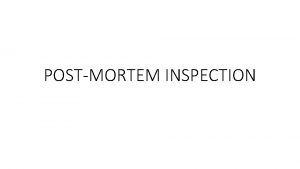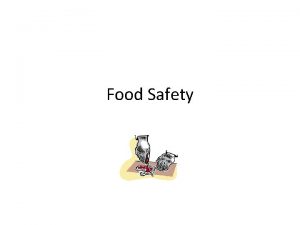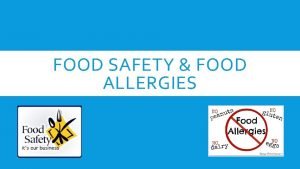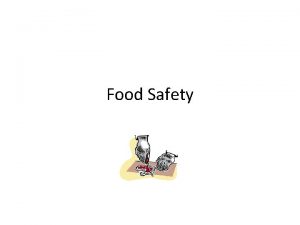Food Safety and Inspection Service Undeclared Allergens in




























- Slides: 28


Food Safety and Inspection Service: Undeclared Allergens in FSIS-Regulated Products: Analysis of Voluntary Product Recalls FSIS Allergen Public Meeting March 16, 2017 Kis Robertson Hale, DVM, MPH CAPT, US Public Health Service FSIS/Office of Public Health Science Deputy Director, Applied Epidemiology Staff 2

Food Safety and Inspection Service: Outline • Background on FSIS recalls • Relevant observations Recall trends since 2000 Allergens and other ingredients associated with recalls Reported allergic reactions Root causes • Conclusions 3

Food Safety and Inspection Service FSIS Mission and Authority • Ensures the nation’s commercial supply of meat, poultry, and processed egg products is safe, wholesome, and correctly labeled and packaged • Regulates more than 6, 000 slaughter and processing establishments nationwide • Legal authority: Federal Meat Inspection Act Poultry Products Inspection Act Egg Products Inspection Act 4

Food Safety and Inspection Service Voluntary Product Recall • Removal of product deemed unfit for consumption • Process carried out by establishments • Common reasons: Pathogen contamination Extraneous material Mislabeling (e. g. , undeclared allergens) • FSIS Directive 8081. 1 describes Agency procedures 5

Food Safety and Inspection Service Recall Classification • Describes risk associated with recalled product • Influences public notification and how FSIS verifies recall effectiveness 6

Food Safety and Inspection Service Reasons for Recall, 2000– 2016 70%, Class I 21%, Class II 8%, Class III 7

Food Safety and Inspection Service Recalls By Year All recalls Undeclared ingredient recalls 8

Food Safety and Inspection Service Recalls By Year All recalls Emergence as most common recall reason Undeclared ingredient recalls 9

Food Safety and Inspection Servic e Big 8 Allergens in Recalls, 2000– 2016 58%, Class I 42%, Class II <1%, Class III 10

Food Safety and Inspection Service Non-Big 8 Ingredients in Recalls, 2000– 2016 1%, Class I 60%, Class II 38%, Class III * Includes Yellow # 5 and sulfites ** Includes undeclared meat and poultry, as well as non-Big 8 allergens (e. g. , sesame seeds) 11

Food Safety and Inspection Service Reported Allergic Reactions • Of 249 undeclared ingredient recalls during 2000– 2012: 39 (16%) prompted by a consumer complaint investigation 9 (4%) precipitated by one or more reports of allergic reaction • Of the 9* recalls associated with reported allergic reactions: 8 (89%) triggered by complaints reported to establishments 2 (22%) triggered by complaints reported to FSIS * One recall was triggered by a complaint reported to both FSIS and an establishment 12

Food Safety and Inspection Service Recalls with Reported Allergic Reactions by Allergen, 2000– 2012 N=9 13

Food Safety and Inspection Service Root Causes For undeclared Big 8 allergen recalls during 2005– 2015 (n = 263), press releases were reviewed to identify root causes Category Description No. (%) Labeling errors Incorrect label, package, or ingredient statement, ingredient statement was missing, or statement omitted allergens known to be present by establishment 167 (63%) Ingredient-related errors An ingredient had a formulation change, an externally supplied ingredient contained an undisclosed allergen, or an allergen-containing ingredient was used where not intended 31 (12%) Incidental contact Allergen introduced into product via releasing agents or contaminated food contact surfaces 26 (10%) Cause not documented in press release 39 (15%) Unknown 14

Food Safety and Inspection Service Ingredient-Related Errors in Time 15

Food Safety and Inspection Service Conclusions • Undeclared allergens are a major cause of recalls; notable increase since 2011 • Reported allergic reactions underscore public health concern, and are not limited to Big 8 • Root causes suggest most recalls are not for trace amounts of allergens • Identifying risk factors requires additional study 16

Food Safety and Inspection Service Acknowledgements • Office of Public Health Science Jennifer Sinatra Kristal Southern Wanda Wilson Annette Bush Wu San Chen • Office of Policy and Program Development Andrew Pugliese • Office of Field Operations Monique Wiggins 17


Food Safety and Inspection Service FSIS Analysis of Verification Activities Scott Seys, Ph. D, MPH Office of Data Integration and Food Protection Food Safety and Inspection Service U. S. Department of Agriculture

Food Safety and Inspection Service Addressing Trends • Sustained increase in the number of recalls of FSIS-regulated products that contain undeclared allergens • Prompted data and policy analyses, policy clarification, FSIS verification activities, reiteration of establishment responsibilities

Food Safety and Inspection Service 2011 -2013: FSIS Notices 35 -11, 54 -11, 29 -13 • Inspection personnel were to discuss with establishments the rising concerns with undeclared allergen recalls • Verification that ingredients used in product formulations are appropriately declared • Verification of control procedures • Verification that establishment has addressed chemical food safety hazard

Food Safety and Inspection Service FSIS Notice 29 -13 Data Analyses • • 36% of establishments reported no allergens Soy, wheat, milk most common allergens 56% incorporate multi-ingredient component 68% of establishments had an allergen control plan/program (typically prerequisite program) • Noncompliance: 64% labeling, 43% hazard analysis, 7% sanitation

Food Safety and Inspection Service 2015 Ongoing, Monthly Formulation Verification Task Verify that all ingredients • being used in the production of the product are present on the product formulation record Verify that all ingredients • from the product formulation are declared in the ingredients statement on the product label by common and usual name Verify the label approval is on file • and the applied labels are consistent with the establishment’s label approval on file

Food Safety and Inspection Service 2015 Ongoing, Monthly Formulation Verification Task • Soy, wheat, milk most common allergens • Fish, tree nuts, shellfish, peanuts uncommon • Increasing number of establishments incorporate multi-ingredient component • Increasing number of establishments had an allergen control plan/program

Food Safety and Inspection Service 2015 Compliance Guidelines • Allergens and Ingredients of Public Health Concern: Identification, Prevention and Control, and Declaration through Labeling • Final and Federal Register Notice published fall 2015 • Focus on meat and poultry establishments • Scenarios, diagrams, checklists

Food Safety and Inspection Service Establishment Responsibilities Identify: Inspection of Incoming Ingredients, Cross-referencing Components, Separation Prevent and Control: Equipment, Sanitation, and Processing Declare: Packaging, Labeling, Storage

Food Safety and Inspection Service Acknowledgments Office of Data Integration and Food Protection • Nathan Greenwell • Joanna Zablotsky-Kufel Office of Public Health Science • Kis Robertson Hale

 To prevent food allergens from being transferred to food
To prevent food allergens from being transferred to food Food safety and inspection service definition
Food safety and inspection service definition Undeclared intentions
Undeclared intentions 14 allergens ireland
14 allergens ireland Allergens cfia
Allergens cfia Control measures for physical hazards
Control measures for physical hazards Unit 2 food food food
Unit 2 food food food Sequence of food chain
Sequence of food chain In service inspection
In service inspection Food establishment inspection viewer
Food establishment inspection viewer Biotechnology and food safety
Biotechnology and food safety Datingoo
Datingoo Food safety regulations and standards
Food safety regulations and standards Chapter 10: nutrition for health lesson 1 answer key
Chapter 10: nutrition for health lesson 1 answer key Chapter 10 lesson 4 nutrition labels and food safety
Chapter 10 lesson 4 nutrition labels and food safety Chapter 19 food safety and storage activity 1 answers
Chapter 19 food safety and storage activity 1 answers Cross contamination examples
Cross contamination examples Food quality importance
Food quality importance Food safety and standards act,2006
Food safety and standards act,2006 Example of a significance of the study
Example of a significance of the study Food safety and toxicology
Food safety and toxicology Develop and implement a food safety program
Develop and implement a food safety program Where do you activate the four shades function
Where do you activate the four shades function Safety care behavioral safety training
Safety care behavioral safety training Process safety vs personal safety
Process safety vs personal safety Ind safety report
Ind safety report Basic safety (construction site safety orientation)
Basic safety (construction site safety orientation) Basic safety construction site safety orientation
Basic safety construction site safety orientation Difference between desired and adequate service
Difference between desired and adequate service
